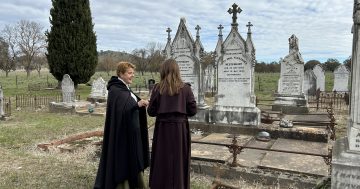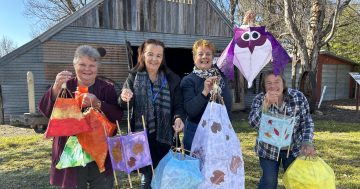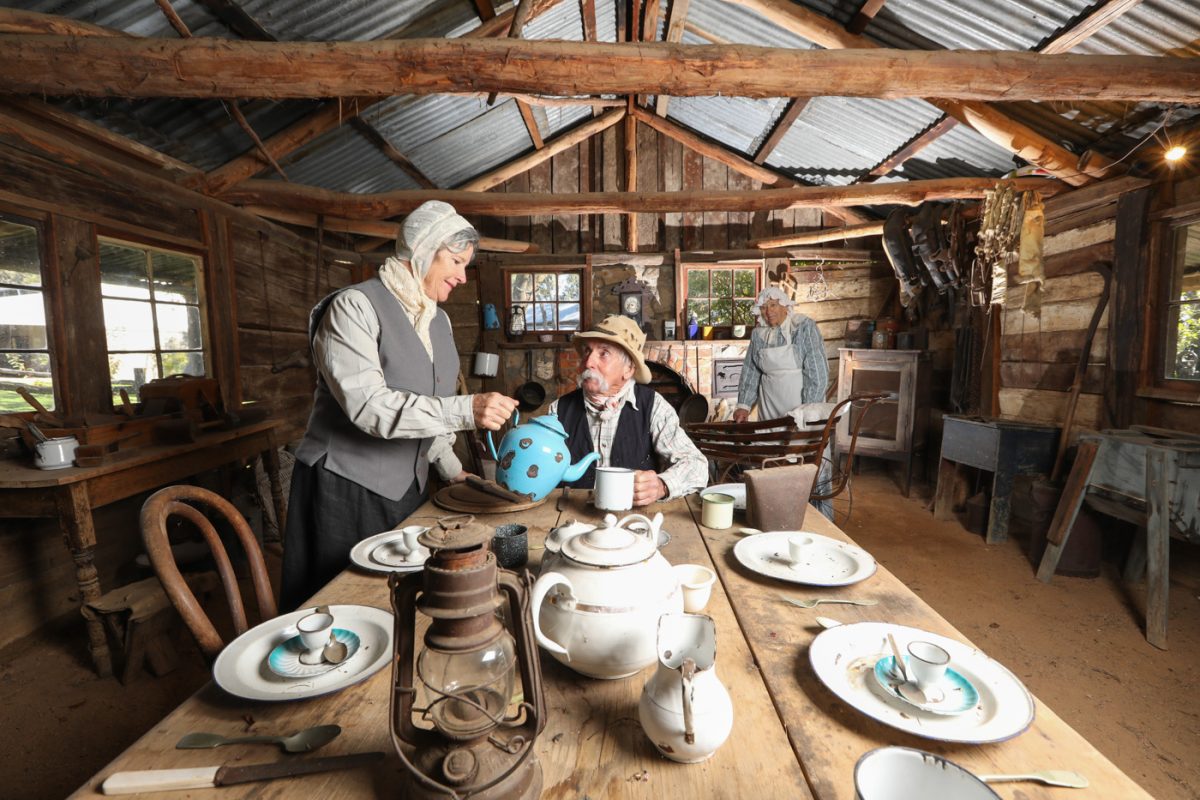
The museum stages regular events, and some volunteers, such as Winx, Sapper and Dot, enjoy nothing better than donning a bit of the original gear and participating ”in theme” to provide a more authentic experience for guests. Photo: Kylie Esler.
It’s hundreds, maybe thousands, of voluntary hours each year that keep the Jindera Pioneer Museum going – and successful.
In this small village town, which sits on the south-west slopes section of the Riverina, the museum is its beating heart.
You’ll find the tearoom packed out on its Sunday-only opening – in the good hands of volunteers Sandra Schilg, Judy Carr and Margaret Dixon.
The doors to the museum are open seven days a week, thanks to a rotating roster of about 20 people, some of whom have been in the role for decades.
The exhibits, spread throughout around 18 rooms and within two acres (8000 sqm) of grounds, are neat, well presented, relevant and correctly labelled, thanks to curator Chris Edgar – yes, another volunteer.
The grounds are immaculate; you guessed it, there’s a maintenance cohort too.
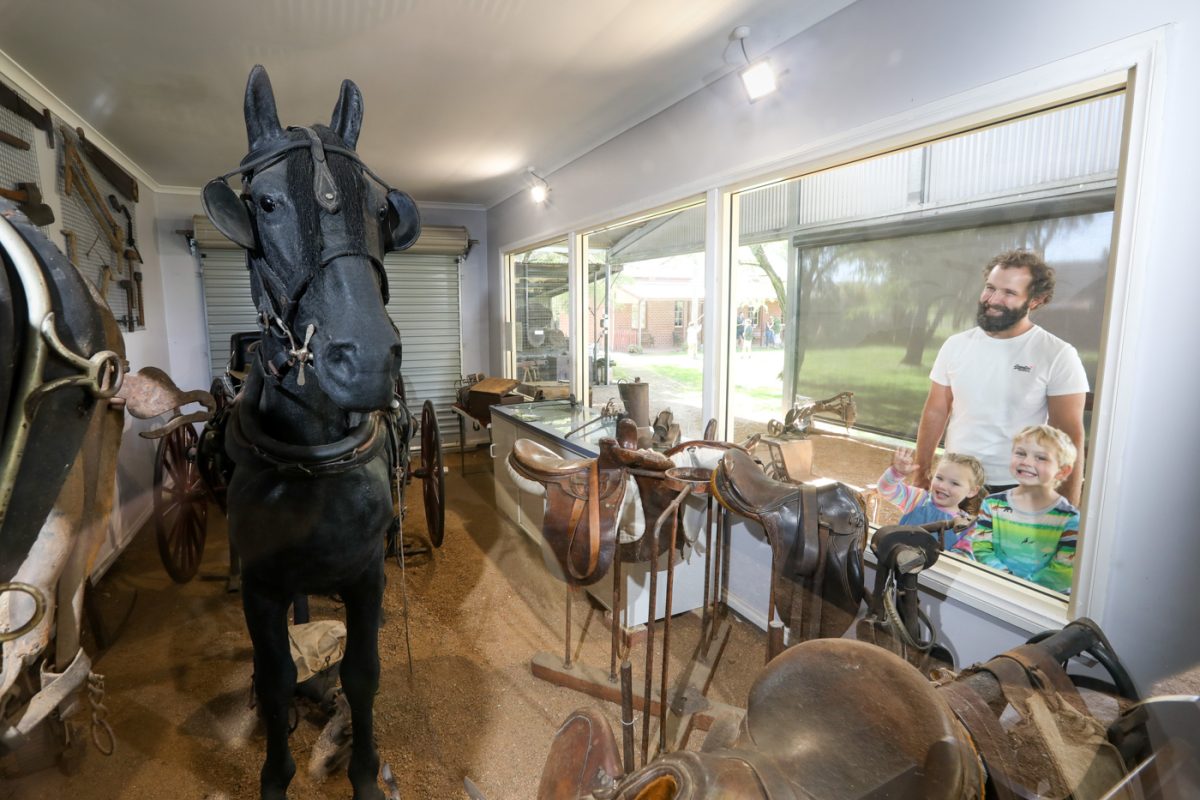
The museum grounds are spread over two acres (8000 sqm) and present a snapshot in time of what rural life was like more than 100 years ago. Photo: Kylie Esler.
The museum pays homage to the early German settlers, lured here through the Robertson Land Act of 1861, which aimed to make it easier for working-class citizens to purchase their own land.
It permitted any person in the colony to select up to 320 acres (130 hectares) of non-urban land and purchase the freehold at a rate of £1 per acre.
In many ways, it feels as though the museum is not a museum at all, but a small part of rural life captured in a time warp, like the people just got up and left.
There is also an enviable events program, held annually, which includes music, high teas, long lunches and heritage dinners.
In February this year, the museum hosted its Forgotten Trades Festival, which attracted a staggering 1500 people during the afternoon event. It was a raging success.
In a time when some country museums struggle to open their doors more than a day or two a week, this one is kicking goals.
How is it done?
“I run it like a business,” says museum president Margie Wehner, the rudder who steers this historic ship.
“I also don’t have any problems asking people for help or telling people what to do,” she laughed.
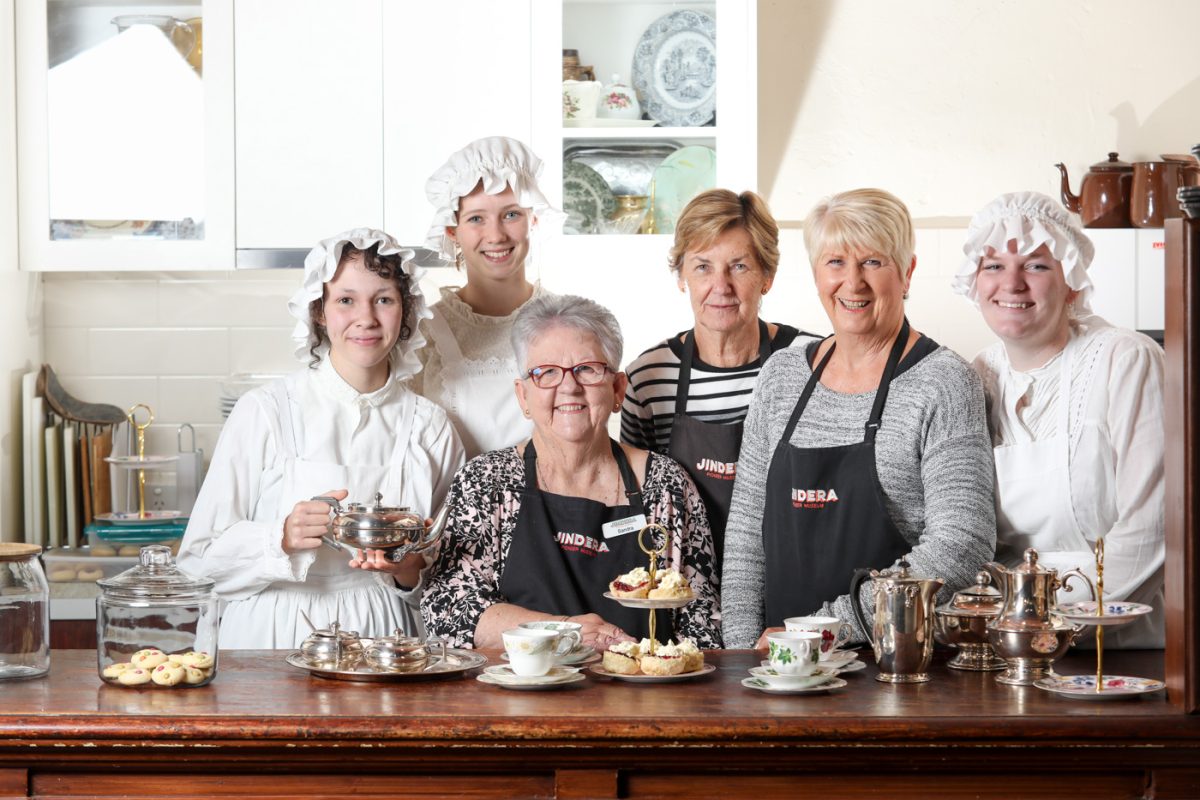
The museum’s tearooms are open every Sunday, serving up delicious scones and other tasty treats, and in the good hands of volunteers including Sandra Schilg, Judy Carr and Margaret Dixon.
After working with volunteers for more than two decades in her role as an inspector in the NSW Rural Fire Service, Margie understands that the people who put their hands up need to feel valued and know they are contributing to the success of the organisation.
“They need to have things to do that they like doing and that give them a sense of contributing in a meaningful way,” she said.
“I also think that many volunteers like to be involved in an organisation that is ‘doing stuff’, that is respected in a community and is seen to be of value to that community.
“My philosophy is also to take what you are offered, not to gripe about what you don’t get. Some can give a little, some choose to give a lot.”
Margie retired from the NSW Rural Fire Service in 2017 and her eye turned keenly to the museum, an organisation that was started by her mother in the 1960s.
“It would have been hard to let such a unique and interesting place fall in a hole due to a lack of passion and interest. Sometimes a change of guard, a different focus or way of looking at things is what is needed to turn something around.”
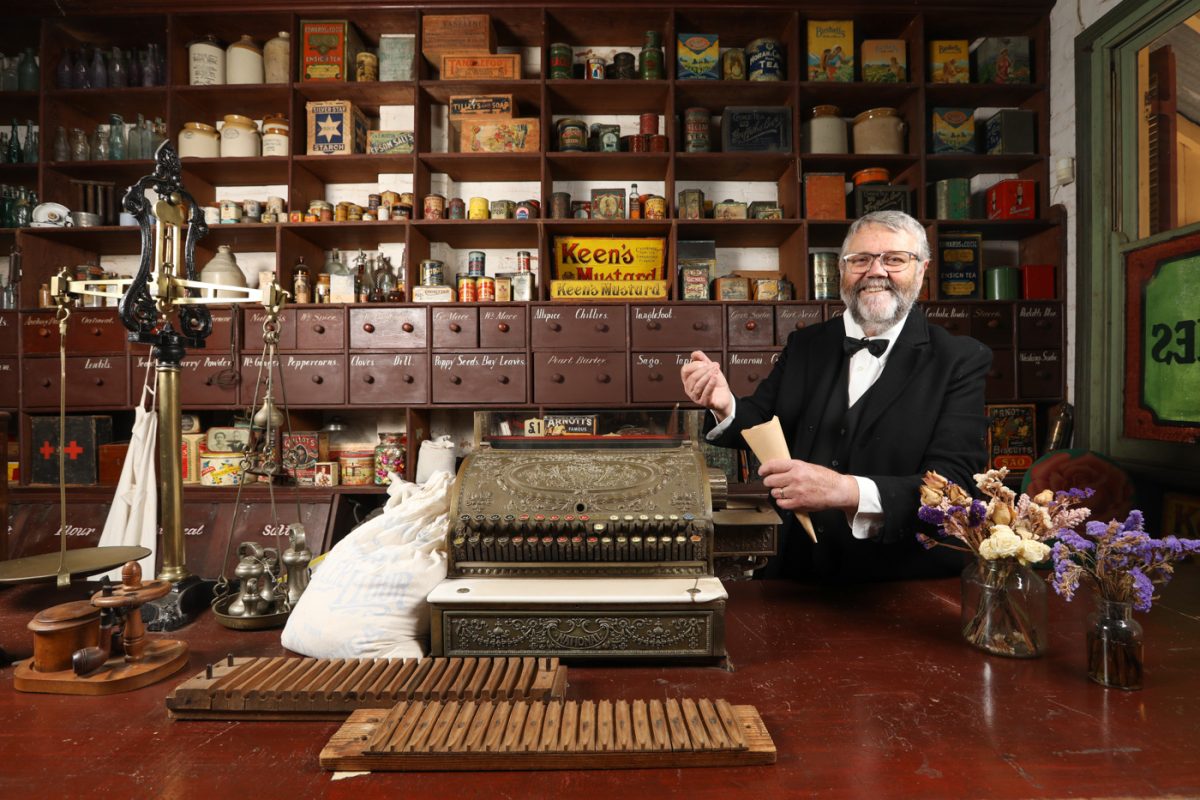
You’ll often find Jindera Pioneer Museum’s Brian Millar cooking up a storm for one of the site’s regular events but he’s just as comfortable behind the grand counter of Wagner’s Store smiling for a photo opportunity. Photo: Kylie Esler.
Margie is now busier than ever.
Alongside her husband Brian – who initially trained as a chef and still loves to cook – and with others in the events team, they plan and prepare a program 12 months in advance.
They are well equipped to cater to almost anything – in earlier years, Brian and Margie owned a catering business and they taught hospitality management at university.
Supported by their trusty tribe of loyal helpers, they draw good numbers to the museum’s events.
For an organisation that has no government funding and which must support itself, this equates to, more importantly, coins in the coffers.
The museum has plans for a new development and always has maintenance to attend to, so fundraising is an essential part of the organisation’s planning.
Coming up on Saturday, 26 August, is the museum’s bush dance, complete with an authentic bush band and dance caller. To be held in the old School of Arts Hall across the road from the museum, it’s just one part of its fundraising efforts.
Then, come Sunday, the doors to Wagner’s Store will be open at 10 am, ready for visitors to hand over their $10 and take in this snapshot in time of life a century ago.
“For our museum, it is important that we find ways to stay relevant in a changing society; to encourage the recognition of history and how it has and continues to influence our lives,” said Margie.
“The least we can do is ensure the museum continues to be preserved for future generations.
“And it seems there are many who also believe in this, as we have volunteers who help with all aspects of the operation, which is an amazing blessing.
“Without them, we simply don’t exist.”







